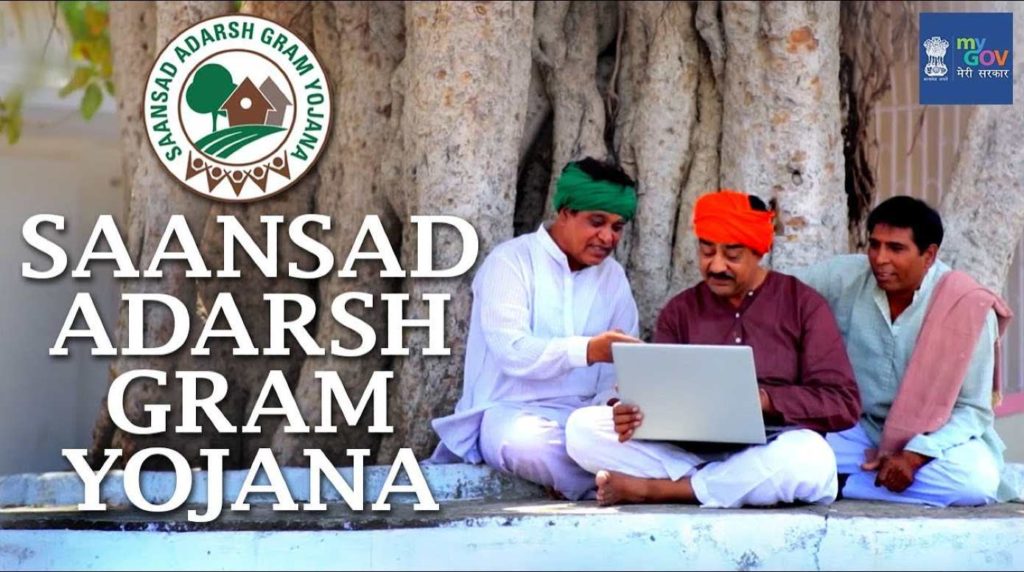Review: CRM of the Rural Development Ministry notes that SAGY has not made any significant impact

The Sansad Adarsh Gram Yojana (SAGY) was launched in October 2014 to make socio-economic & infrastructural development in select villages. However, a CRM team of the Ministry of Rural Development notes that that scheme has made no significant impact except in a few villages.
Sansad Adarsh Gram Yojana (SAGY) was launched on 11 October 2014. Under the Yojana, Members of Parliament (MPs) will be responsible for developing the socio-economic and physical infrastructure of three villages each by 2019, and a total of eight villages each by 2024. The goal of the scheme is to translate the comprehensive and organic vision of Mahatma Gandhi into reality by nurturing values of national pride, community spirit, self-confidence, and developing infrastructure.
The vision behind SAGY villages is to create model villages by ensuring convergence of schemes and its implementation on priority basis. The main objectives of SAGY are:
- To trigger processes that lead to the holistic development of the identified Gram Panchayats (GPs).
- To substantially improve the standard of living and quality of life of all sections of the population.
- Improved basic amenities.
- Higher productivity.
- Enhanced human development.
- Better livelihood opportunities.
- Reduced disparities.
- Access to rights and entitlements.
- Wider social mobilization.
- Enriched social capital.
The chronology of activities involved in SAGY include:
- Identification of GP.
- Appointment of Charge Officer
- Entry Point Activities: Environment creation and social mobilization spearheaded by the MP.
- Situation Analysis: Identifies the local needs, key constraints, and available resources in relation to the socio-economic dynamics, availability of amenities, services, and fulfillment of rights and entitlements of villagers, etc.
- Formulation of Village Development Plan (VDP): The working group draws up the draft village development plan based on the needs prioritized by the people. The Village Development Plan would broadly cover activities from the eight sectors listed in SAGY Guideline.
- Approval of the VDP: After incorporating suggestions of the MP, the VDP is to be approved at two levels, first at the Gram Sabha and then at the District Level Committee chaired by the District Collector.
- Execution of the Projects: Projects proposed under VDP should be executed through the convergence of all Central & State Schemes and partnership with Private, Voluntary, and Cooperative sectors.
The following table shows the major parameters with respect to the progress of SAGY to date.
Trends in Identification of GPs
Members of Parliament can select any gram panchayat, except their own village or their spouse’s, to be developed as an Adarsh Gram. Lok Sabha MPs can choose a village from their constituency, and Rajya Sabha MPs from the state from which they are elected. Nominated members can choose a village from any district of the country. MPs who represent urban constituencies can identify a village from a neighbouring rural constituency.
This chart is as per the latest data available on the SAGY official website. The percentage indicates the progress in the identification of villages compared to the total number of MPs from a particular state. For instance, Manipur has 2 Lok Sabha MPs and one Rajya Sabha MP. During SAGY-I, the number of identified villages is 33% more than what they are supposed to identify. In some cases, the percentage is more than 100% since nominated MPs may choose a Gram Panchayat from the rural area of any district in the country.
The following graph compares the identification of gram panchayats in SAGY-I (2014-19) and SAGY-II (2019-24) in different states.
The graph shows a significant decline in the percentage of GPs identified in the SAGY-II as compared to SAGY-I. All the states reported a lower number of identified GPs in the second round, with Tripura being the only exception. Many states such as Arunachal Pradesh, Meghalaya, Delhi, Ladakh, and West Bengal have not reported any identified GP for the second round of SAGY. Reportedly, more than half of MPs have not yet adopted a village under the scheme in 2019-2024 (SAGY II).
Review of Implementation
In its Common Review Mission (CRM), the Ministry of Rural Development conducts an independent assessment of the progress under various programmes and schemes. In the 2019 report, the CRM team visited the states and concluded that the scheme has not made any significant impact on the socio-economic development of selected gram panchayats.
A team comprising of retired bureaucrats, academics, and research organisations, etc. visited around 120 villages, in 21 districts across eight states. Some of the major findings of the report are:
- Low selection of panchayats: As evident from the above graph above, the quantum of selected panchayats has registered a significant decline over the years.
- Lack of interest and funds: No new funds are allocated for the scheme. Resources may be raised through existing schemes, Member of Parliament Local Area Development Scheme (MPLADS), gram panchayat’s own revenue, Central and State Finance Commission Grants and/or Corporate Social Responsibility funds. The report notes that model villages under the scheme suffer from a lack of funds and many MPs did not acquire significant funds from the MPLADS scheme. In one of our earlier stories, we have explored how more than Rs. 1750 crores of MPLADS funds remained unutilised as of December 2020.
- Lack of political will
- Low convergence of MGNREGA with MPLADS
The report concludes that even though in some cases where MPs have been proactive, some infrastructural development has taken place, but the scheme has not made any significant impact.